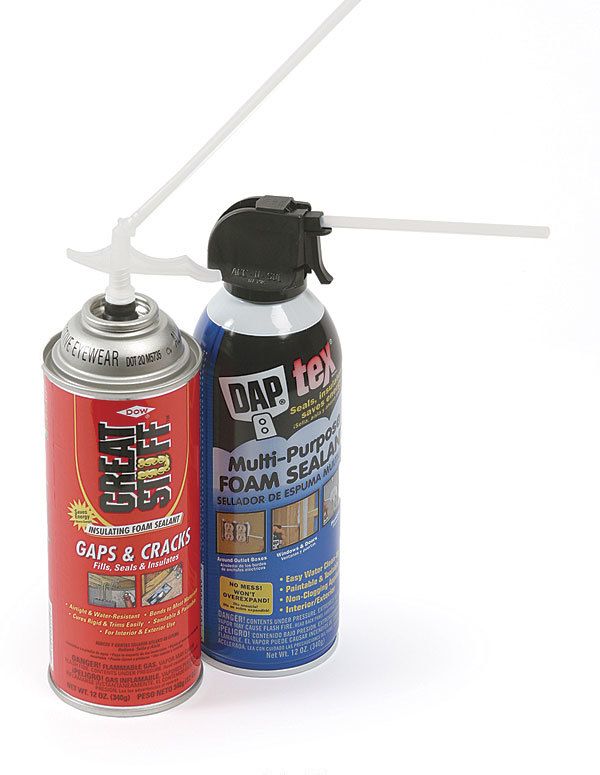
No matter how tightly a house is built, it will have gaps—around windows, ceiling fixtures, chimneys, vents, and plumbing penetrations. Sealing these openings is an essential part of building an efficient, quality house.
These air-sealing projects are best completed by using canned spray foam, of which there are two types: latex and polyurethane. Both come in cans that can range from 12 oz. to 26 oz., and most products can be applied indoors or outdoors. Manufacturers of both types of foam offer products designed for specific areas of the home—around windows and doors, for example. However, each type of sealant has benefits and drawbacks. The one you choose depends largely on where you intend to apply it.
Latex has a low expansion rate
Pros
• Can be washed off with water
• Expands little or not at all, so risk of overfilling cavities is low
• Less likely to warp window or door jambs
• Applicators can be cleaned easily after use
Cons
• Low expansion means that filling gaps can be tricky
• Does not adhere as well as polyurethane
• Can absorb water
• Some products can be painted only with latex paint
• Cured foam is difficult to trim
Cost: $6 to $8 per can, depending on size
Polyurethane is more versatile
Pros
• Typically has a high expansion rate
• Water resistant
• Can be painted with latex or oilbased paint
• Cured foam is firm, not spongy, so it can be trimmed easily
Cons
• Cleanup is difficult (uncured foam must be removed with acetone; cured foam must be cut off)
• Applicators clog easily
• Gaps can be overfilled easily
• Cannot be removed from clothing, carpet, and upholstery after curing
Cost: $4 to $11 per can, depending on size
Sources
Great Stuff, www.greatstuff.dow.com; Touch ’n Foam, www.touch-n-foam.com; DAP, www.dap.com
Fine Homebuilding Recommended Products
Fine Homebuilding receives a commission for items purchased through links on this site, including Amazon Associates and other affiliate advertising programs.

Reliable Crimp Connectors

8067 All-Weather Flashing Tape

Affordable IR Camera






















